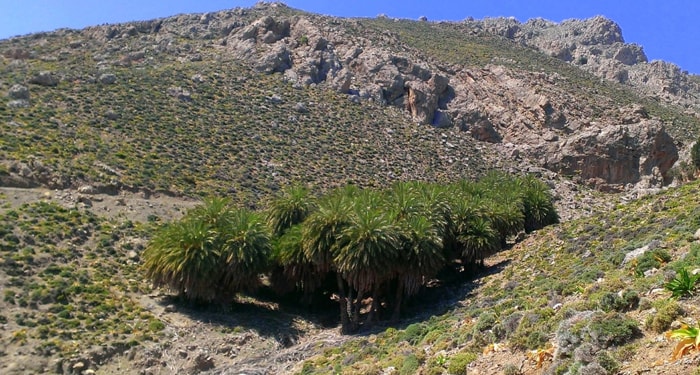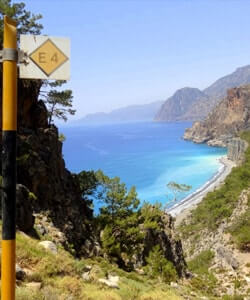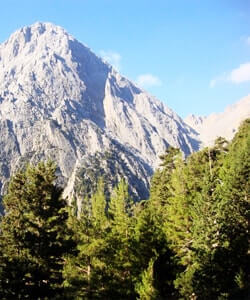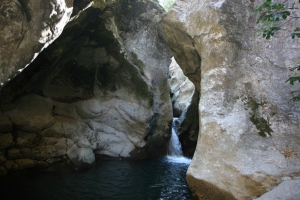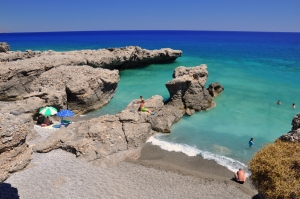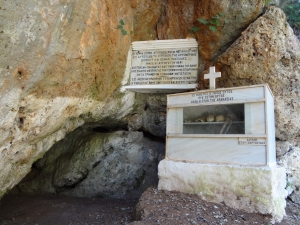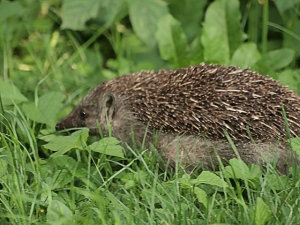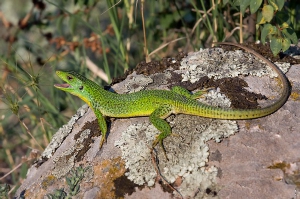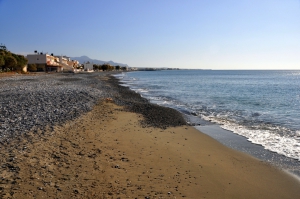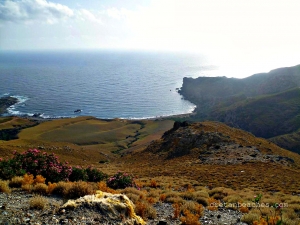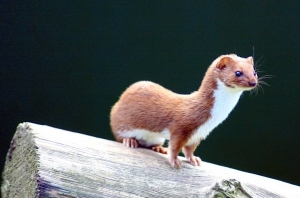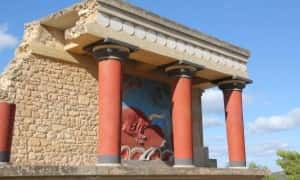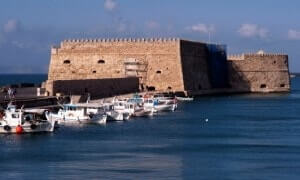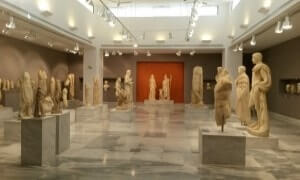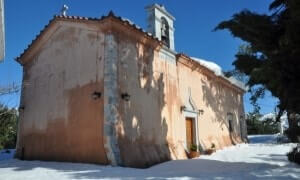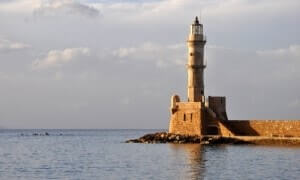Gorge Smiliano or Kalamafka is located north of the village Ano Meros, about 100km southwest of Heraklion city. Through the gorge runs the Lygiotis river which is supplied by the valleys of Gerakari and the slopes of Samitos Mount. The canyon has a lot of water in winter and crossing it, by any means, is very tough.
If you head east of Fylaki beach, you will soon (100m only) reach the exit of the Sfakiano Gorge, with a nice pebbly beach formed. The area is called Plakakia and hosts some of the most spectacular beaches in Crete, formed on small narrow fjords. Indeed, some of them are formed inside small caves! There is a tricky dirt road leading close to the beach.
The cave Krionerida is located in the ravine Laggos, southwest of the village Vafes, at an altitude of 230m. The cave has no special speleological value, but it has enormous historical importance, as the residents of Vafes were killed here by the Turks in 1821. Indeed, the wider region of Krionerida was named so after this historic cave.
Hedgehogs are commonly met animals on the island of Crete, belonging to two different species, Erinaceus concolor and Erinaceus roumanicus. Unfortunately, they are considered a delicacy for some, and there several cases in Crete when these animals are eaten (mainly by Roma people). Lastly, the hedgehogs are considered sacred animals by the Greek Church because of the characteristic manner of mating, reminiscent of humans. Indeed, sometimes they mate face to face so as to avoid the spines on their back.
In Crete, apart from the main subspecies Lacerta trilineata trilineata, there is also the subspecies Lacerta trilineata polylepidota. The green lizards are completely harmless, although some consider them poisonous.
Gra Ligia is a seaside village located just 5km west of Ierapetra and 39km south of Agios Nikolaos. It is situated at the exit of a large fertile valley, which is full with greenhouses with early vegetables. Locals were the first to grow vegetables in greenhouses and this was later extended throughout the area of Ierapetra. There are so many greenhouses, that locals call Gra Ligia as “Silicon Valley of Greece”.
The secluded beach of Kokkina Grema (i.e. Red Cliffs) is located 55km west of Chania, 28km southwest of Kissamos and 3km west of Platanos village. The beach is named after the huge reddish peninsula at its north end.
The Cretan least weasel (mustela nivalis galinthias) is an endemic subspecies of the common weasel, which is met all over the island. Other names of the animal is dwarf, pygmy or mouse weasel. Cretans also call it kalogiannou or kalogynekari (meaning nun) due to its white-striped chest, making it look like a nun.





